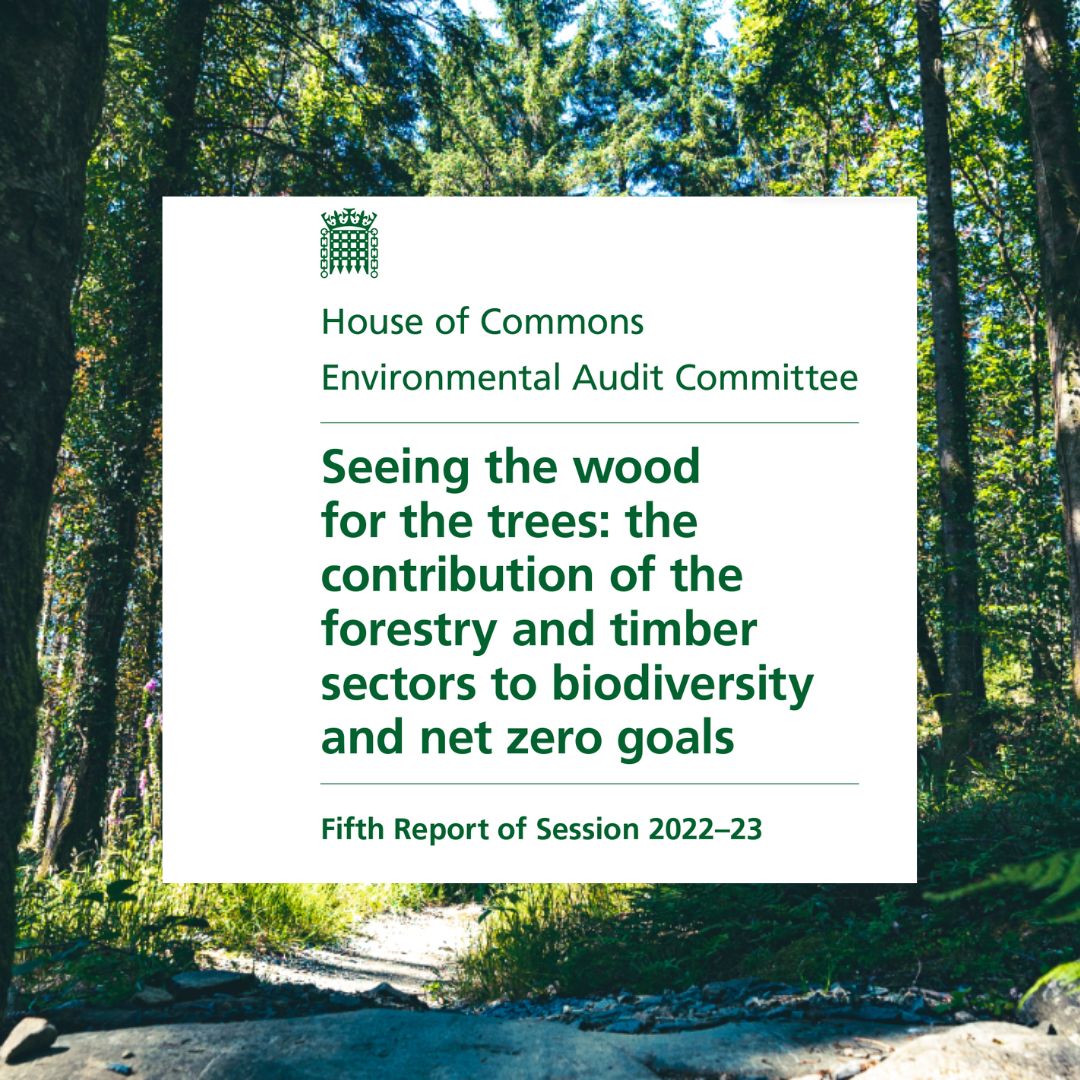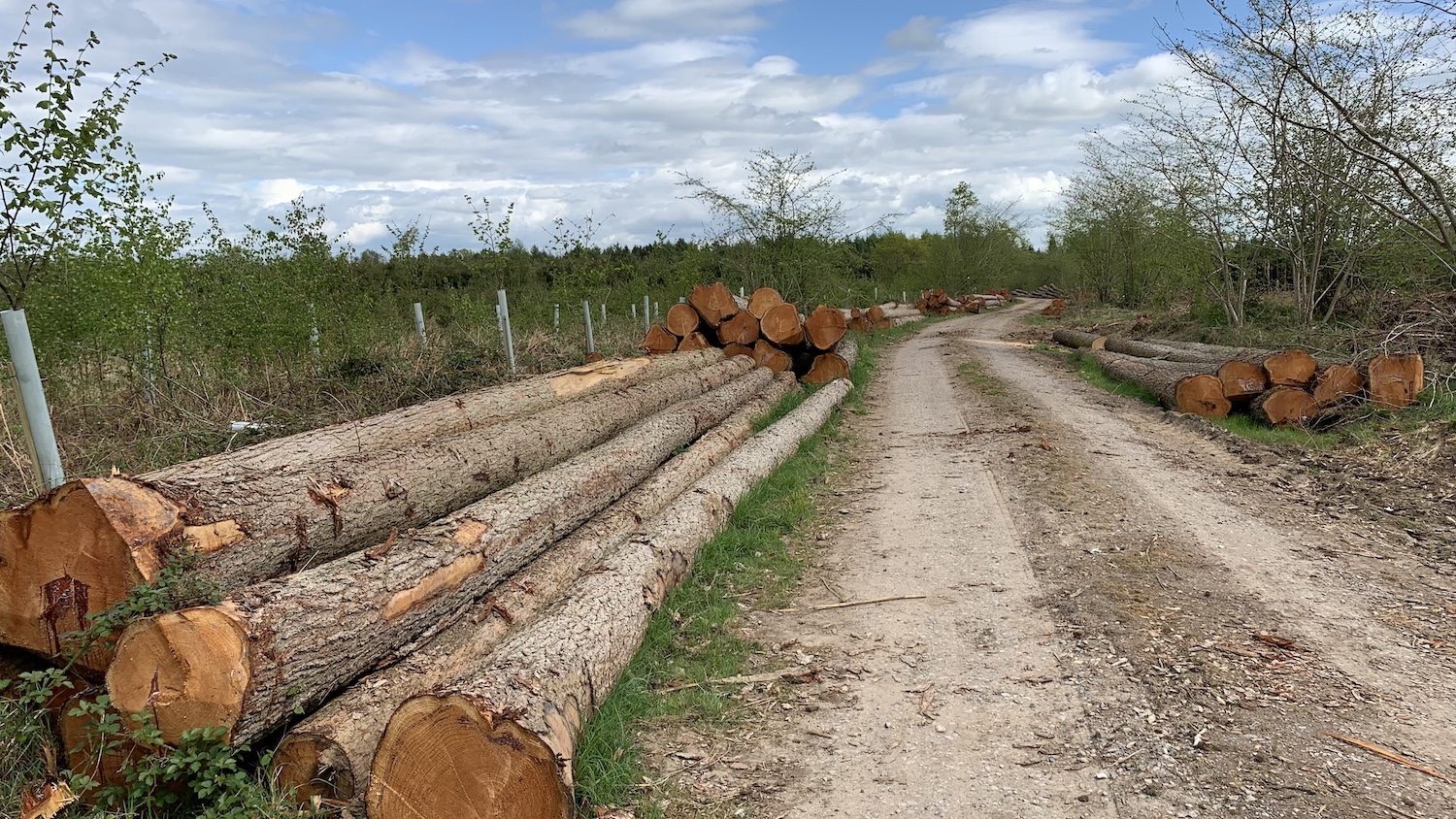September 8, 2022
Why we need a UK Timber Strategy – our submission to the EAC
If we want home-grown timber in 40-years’ time, then we really must plan for it now. There is an urgent need for a National Timber Strategy, and we may have a chance to help shape it.
The Environmental Audit Committee called for evidence for their inquiry into the UK timber industry and global deforestation.
[UPDATE – In July 2023 the report was published, and it did include reference to our comments. Read the EAC report here, and our submission here.]
This group of MPs are looking at three areas:
1 – How the UK can best scale up a sustainable, resilient domestic timber sector and reduce its reliance on imports;
2 – The degree to which UK supply chains contribute to deforestation overseas and the effectiveness of the government’s efforts to curb this;
3 – How the UK works with international partners to tackle deforestation.
Action is needed
Our submission to the inquiry emphasises the need for action.
“It’s critically important that we are honest about the timber supply situation in the UK. If we want home-grown timber in 40-years’ time, we must plan for it now as a priority.”
The inquiry asked if the UK government demonstrates a sufficient understanding of the future demand for timber. Our reply was “it does not – nor does it have a plan for the domestic timber industry.”
Our full response will eventually be published as part of the EAC inquiry, but here are a few highlights:
Woodland must be planned, planted and managed right from the beginning to yield timber of the quality that is suitable for construction. Many organisations say we must produce more of our own timber. But when it comes to the point of prioritising timber production at the time of planting, and during ongoing forest management, then the enthusiasm tends to disappear.
There is a fixation with native-grown broadleaf species in this country. Of course, there is an important role to be played by native species, but many of these are already suffering from disease and drought.
If we do not look beyond native broadleaf species our woodlands of the future will fail. They will fail to absorb carbon. They will fail to improve biodiversity levels. They will fail to improve water and soil quality and they will certainly fail to produce building grade timber.
Unless some of the naturalised species are included in the ‘allowed’ list – such as sycamore and sweet chestnut, and a range of quicker growing conifers such as Douglas fir, western red cedar, and spruce – there simply will not be any timber available for future use.
Missing the target?
Tree planting targets have repeatedly been missed in England, Wales, and Northern Ireland. Those trees that are planted now won’t be available to the timber industry for at least 40 years, and without effective planning and forest management, the timber from these woodlands won’t be suitable for the construction market.
In the burgeoning climate and biodiversity emergencies, we need to place great weight on improving our forest and woodland strategies, increasing productivity and implementing resilient plans for the future of timber as a home-grown industry.
National Timber Strategy
It is not realistic to believe that Government grants and additional money from Carbon credits will be enough to fund the management of woodlands in the long term; especially if woodland cover is to be increased in line with Government pledges.
It is essential to consider the production of timber at the point when woodlands are designed and created. It is wishful thinking to believe that in a few decades, construction and joinery grade timber will appear out of native broadleaf woodlands where biodiversity or carbon capture has been the management priority.
Woodland must be planted and managed right from the beginning to yield timber of the quality that is required by the market. It’s critically important that we are honest about the sustainable timber situation. If we want home-grown timber in 40-years’ time, then we really must plan for it now.
We need a National Timber Strategy that lays out what is required, why, and a full outline of the benefits of producing UK-grown timber in the long-term.
A National Timber Strategy would focus on the need for productive woodlands and forests in England. There is an urgent need to prioritise productivity as an outcome of woodland creation and management. We need to grow and produce more of our own timber rather than rely on importing most of our timber from abroad. And to do that, we must understand that creating productive woodlands that are managed for timber – as well as biodiversity and amenity – is essential.







